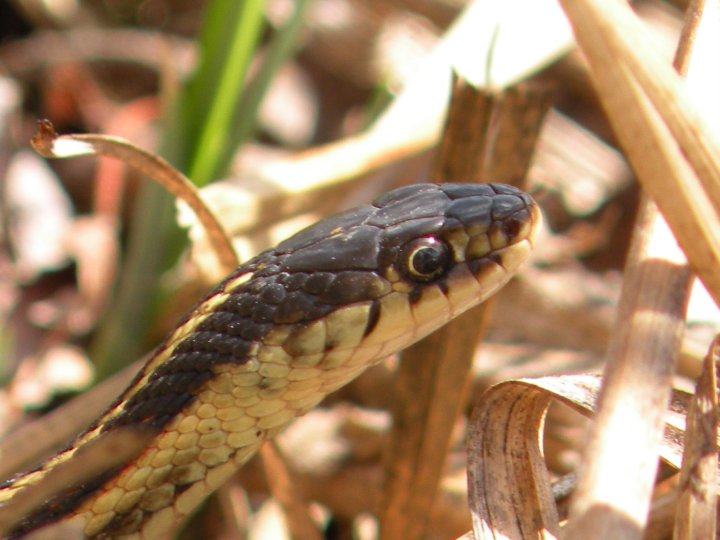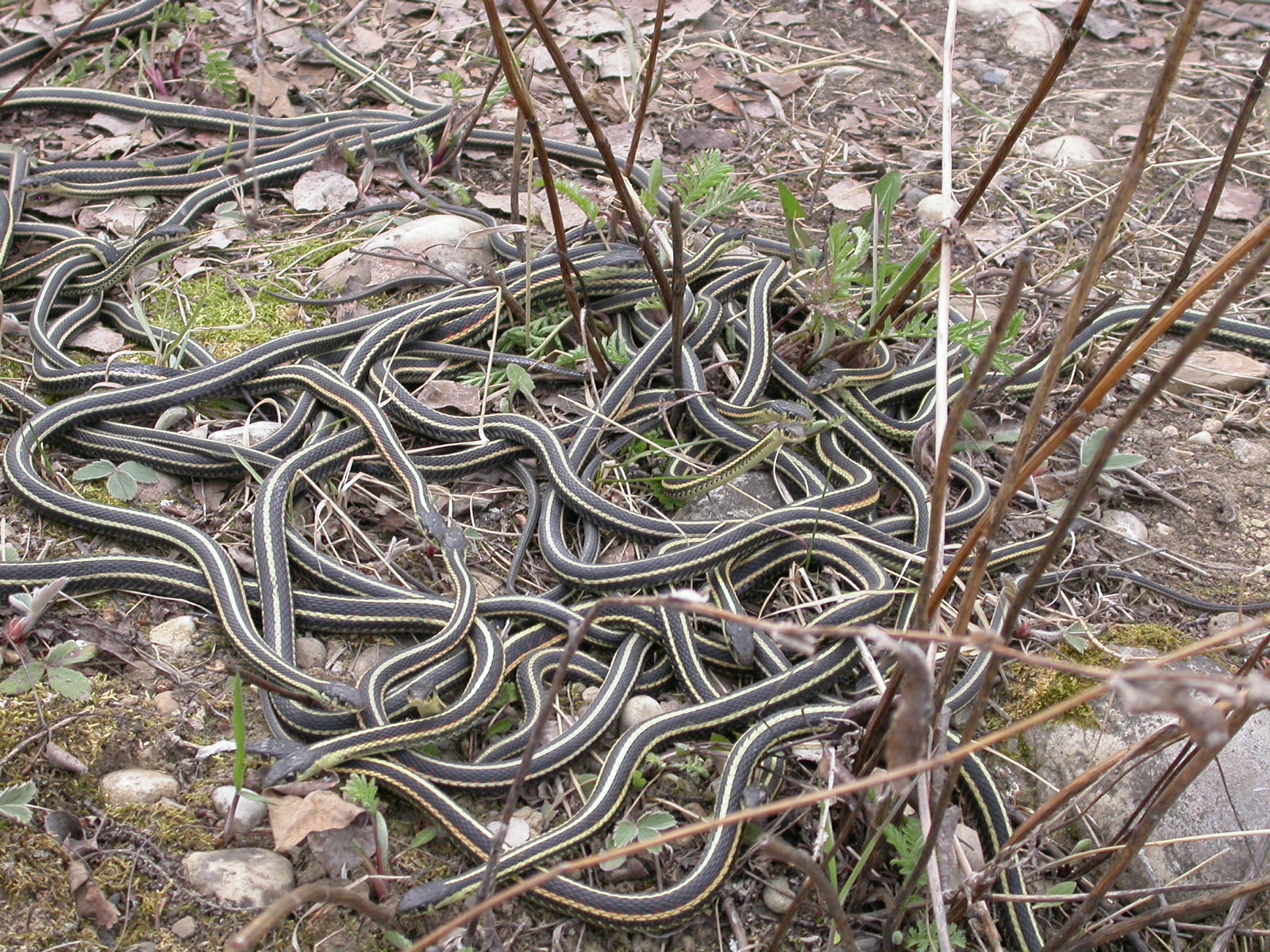Do you ever wonder what "cold-blooded" animals do during cold Canadian winters? When many mammals are tucking themselves in to hibernate for the winter, many herptiles - reptiles and amphibians - are doing the same thing.
Many types of snakes, including garter snakes in Alberta, retreat to a winter den known as a hibernaculum. A hibernaculum is an underground chamber where hundreds of snakes gather, where they are protected from the cold below the frost line. Rocky outcrops and underground areas provide excellent hibernating spots, as do animal burrows and even other structures such as old wells and building foundations.
If you see a gathering of snakes in the fall or spring, that's a good sign that there is a snake hibernaculum nearby! Because snakes are present in such large numbers and are vulnerable at hibernacula, these sites are protected by the Alberta Wildlife Act.
Just as many reptiles find an underground place to hibernate, most amphibians do as well. Aquatic frogs survive underwater, and other frogs and toads are good diggers and can burrow far enough into the soil to be protected from the cold.
But some frogs, like the wood frog, can't dig a deep enough hole. Instead, they find a protected place under logs or rocks, or dig into the leaf litter as far as they can. Despite not being fully protected from the cold in this way, wood frogs still have an amazing ability to survive. They actually freeze, and their heart can even stop - essentially becoming frog-sicles for the winter. But sugars in their bodies prevent their organs from being damaged, and when the weather warms up again, they thaw and spring back to life!
Thank you to Adwoa Adasi, EALT volunteer, for contributing to this post.
Photos by EALT and Hil Reine




